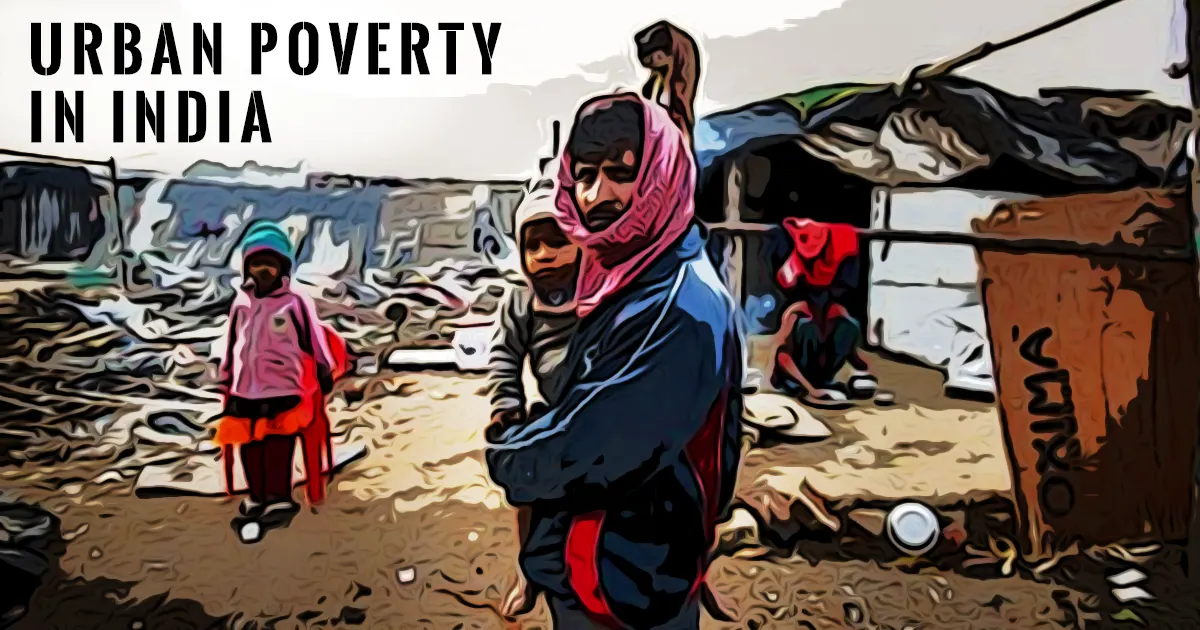GS1: INDIAN SOCIETY

Context:
The India Employment Report (IER) 2024, recently published, has highlighted the paradox of higher unemployment rates and wages in urban areas. This calls for a deeper understanding of the implications for urban poverty.
About the Report
- Published by: International Labour Organization (ILO) and the Institute for Human Development (IHD).
- Key Concern: Limited trickle-down benefits for the working class, despite a 5.4% average real economic growth from 2015-16 to 2022-23.
Key Findings
- Urban Unemployment: Persistent high rates of unemployment in cities.
- Gender Gap: Labour Force Participation Rate (LFPR) for young men is significantly higher (61.2%) compared to young women (21.7%).
- Decline in Urban Poverty: Urban poverty reduced from 13.7% in 2012 to 12.55% in 2022 at the national level.
Features of Urban Poverty
- Inadequate housing and lack of security.
- Poor infrastructure for essential services.
- Insufficient transportation systems.
- Higher incidence of crime, including extortion.
- Overcrowding in unauthorized slum areas.
- Increased vulnerability to disease outbreaks.
Reasons for Urban Poverty
- Migration: Influx of rural populations into cities.
- Exclusionary Urban Planning: Lack of inclusive city development strategies.
- Legal Barriers: Restrictions in accessing housing and formal employment.
- Lack of Social Security: Limited safety nets for urban poor.
- Informal Employment: Prevalence of low-paying, insecure jobs.
Measures to Address Urban Poverty
- Community Efforts: Strengthen local support systems in impoverished areas.
- Mixed-Use Neighborhoods: Integrate residential, commercial, and recreational spaces to provide diverse opportunities.
- Women’s Participation: Involve women-led initiatives like Kudumbashree in urban poverty alleviation programs.
- Enhanced Social Security: Expand coverage and make benefits portable across states.
Government Initiatives
- Atal Mission for Rejuvenation and Urban Transformation 2.0 (AMRUT 2.0): Focused on urban infrastructure development.
- Smart Cities Mission: Promoting sustainable and inclusive urbanization.
- Swachh Bharat Mission-Urban 2.0 (SBM-U 2.0): Ensuring cleanliness and sanitation in cities.
- Pradhan Mantri Awas Yojana-Urban (PMAY-U): Providing affordable housing for all.
- Deendayal Antyodaya Yojana-National Urban Livelihoods Mission (DAY-NULM): Enhancing employment opportunities for the urban poor.
- PM Street Vendor’s AtmaNirbhar Nidhi (PM SVANidhi): Supporting small vendors through financial assistance.
These measures collectively aim to address the multifaceted challenges of urban poverty and create sustainable urban ecosystems.
QUESTION: “Discuss the key challenges of urban poverty in India and critically analyze the effectiveness of government initiatives in addressing these issues. (250 words)”




